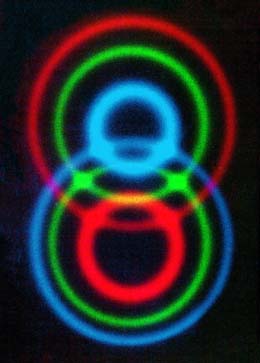

The first photographs of downconversion light (entangled photons) from a Beta Barium Borate (BBO) parametric downconversion crystal were take in the Innsbruck laboratory of the Institut für Experimantalphysik by Michael Reck and Paul Kwiat [1. Reck 1996]. They used high-speed infrared film and a 35mm single-lens reflex camera with the lens removed. The UV-light from the pump laser and fluorescence from the crystal were held back by stacks of UV-cutoff filters.
The camera was 11cm from the crystal with the UV-pump beam (wavelength 351nm) pointing to the center of the film. Interference filters with 5nm bandwidth selected a single color. A great number of photographs were taken on Kodak high-speed BW infrared film with different exposure times. The photographs were developed for 4min using Ilford Tech HC developer by Photo Grattl, Innsbruck. The optimal contrast on the film was achieved for exposure times of 1 hour at a UV-pump power of 165mW. The entangled photon pairs from this source were used to demonstrate a violation of Bell's inequalities by over 100 standard deviations in less than 5 min [2. Kwiat 1995].
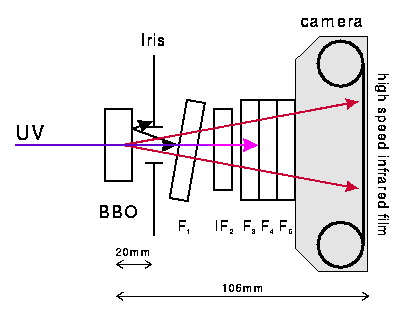 |
Figure 1: Schematic of the setup used to photograph type-II downconversion: The BBO crystal is pumped by an Argon ion laser with P=200mW at 351nm . An iris diaphragm helped to reduce background and reflected light. A tilted UV cutoff filter (UV-Sky F1) is used to reduce fluorescence from the exchangeable interference filter (IF2). We used 681nm, 702nm, 725nm interference filters with 5nm full-width-half-maximum (FWHM) bandwidth. A stack of cutoff filters (UVHaze F3, UVHaze F4, O2 F5) further reduce the background light. The camera is a Pentax K2 35mm single-lens reflex camera with the lens removed. The typical exposure time for the high speed infrared film was one hour. |
| Figure 2: Transmission curves of the cut-off filters used to photograph type-II downconversion from BBO. |
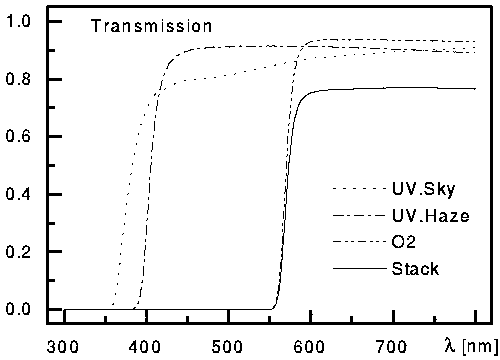
|
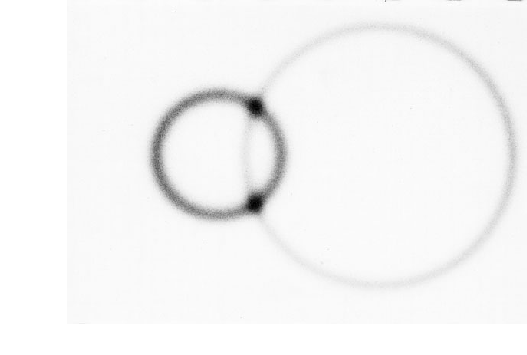
Figure 3: High speed infrared film exposed with light from type-II downconversion in BBO. A 681nm interference filter with 5nm bandwidth was used for this image.
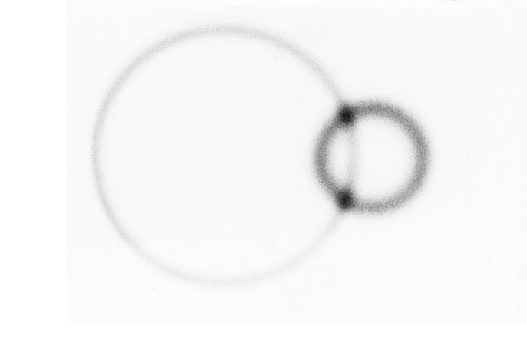
Figure 4: High speed infrared film exposed with light from type-II downconversion in BBO. A 725nm interference filter with 5nm bandwidth was used for this image.
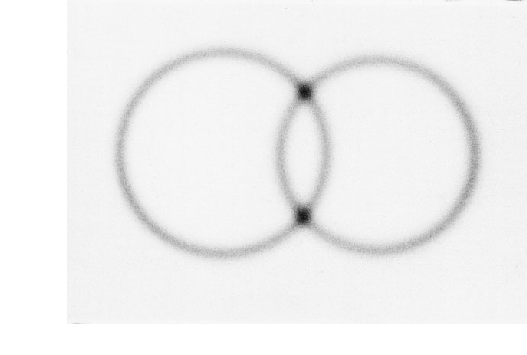
Figure 5: High speed infrared film exposed with light from type-II downconversion in BBO. A 702nm interference filter with 5nm bandwidth was used for this image. Polarization-entangled photons are observed at the intersection of the two circles.
| © 1996-2022 | Michael Reck |
| e-mail: | physics@michael-reck.net |